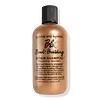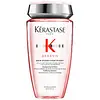What's inside
What's inside
 Key Ingredients
Key Ingredients

 Benefits
Benefits

 Concerns
Concerns

 Ingredients Side-by-side
Ingredients Side-by-side

Water
Skin ConditioningSodium Cocoyl Isethionate
CleansingSodium Lauroyl Sarcosinate
CleansingSodium Lauryl Sulfoacetate
CleansingPropanediol
SolventCoco-Betaine
CleansingAcrylates Copolymer
Honey
HumectantHydrogenated Castor Oil/Sebacic Acid Copolymer
EmollientYeast Extract
Skin ConditioningOctyldodecyl Citrate Crosspolymer
HumectantHydroxypropylgluconamide
HumectantHydroxypropylammonium Gluconate
HumectantGuar Hydroxypropyltrimonium Chloride
Skin ConditioningPhenyl Trimethicone
Skin ConditioningCaprylyl Glycol
EmollientPanthenol
Skin ConditioningPolysorbate 20
EmulsifyingGlycol Distearate
EmollientButyl Methoxydibenzoylmethane
UV AbsorberEthylhexyl Methoxycinnamate
UV AbsorberSodium Methyl Cocoyl Taurate
CleansingPEG-150 Distearate
EmulsifyingPolyquaternium-7
Silica
AbrasiveButylene Glycol
HumectantCitric Acid
BufferingTartaric Acid
BufferingSodium Hydroxide
BufferingSodium Chloride
MaskingBHT
AntioxidantParfum
MaskingLimonene
PerfumingBenzyl Salicylate
PerfumingLinalool
PerfumingTetrasodium EDTA
Sodium Benzoate
MaskingPotassium Sorbate
PreservativePhenoxyethanol
PreservativeMica
Cosmetic ColorantCI 77891
Cosmetic ColorantWater, Sodium Cocoyl Isethionate, Sodium Lauroyl Sarcosinate, Sodium Lauryl Sulfoacetate, Propanediol, Coco-Betaine, Acrylates Copolymer, Honey, Hydrogenated Castor Oil/Sebacic Acid Copolymer, Yeast Extract, Octyldodecyl Citrate Crosspolymer, Hydroxypropylgluconamide, Hydroxypropylammonium Gluconate, Guar Hydroxypropyltrimonium Chloride, Phenyl Trimethicone, Caprylyl Glycol, Panthenol, Polysorbate 20, Glycol Distearate, Butyl Methoxydibenzoylmethane, Ethylhexyl Methoxycinnamate, Sodium Methyl Cocoyl Taurate, PEG-150 Distearate, Polyquaternium-7, Silica, Butylene Glycol, Citric Acid, Tartaric Acid, Sodium Hydroxide, Sodium Chloride, BHT, Parfum, Limonene, Benzyl Salicylate, Linalool, Tetrasodium EDTA, Sodium Benzoate, Potassium Sorbate, Phenoxyethanol, Mica, CI 77891
Water
Skin ConditioningSodium Laureth Sulfate
CleansingCitric Acid
BufferingCocamidopropyl Betaine
CleansingSodium Hydroxide
BufferingPropylene Glycol
HumectantSodium Chloride
MaskingSodium Benzoate
MaskingHexylene Glycol
EmulsifyingPolyquaternium-10
Salicylic Acid
MaskingLimonene
PerfumingLinalool
PerfumingGlycerin
HumectantBenzyl Salicylate
PerfumingCoumarin
PerfumingZingiber Officinale Root Extract
MaskingCitral
PerfumingBenzyl Alcohol
PerfumingCitronellol
PerfumingXylitylglucoside
HumectantAnhydroxylitol
HumectantLeontopodium Alpinum Callus Culture Extract
AntioxidantXylitol
HumectantXanthan Gum
EmulsifyingDipeptide Diaminobutyroyl Benzylamide Diacetate
Skin ConditioningParfum
MaskingWater, Sodium Laureth Sulfate, Citric Acid, Cocamidopropyl Betaine, Sodium Hydroxide, Propylene Glycol, Sodium Chloride, Sodium Benzoate, Hexylene Glycol, Polyquaternium-10, Salicylic Acid, Limonene, Linalool, Glycerin, Benzyl Salicylate, Coumarin, Zingiber Officinale Root Extract, Citral, Benzyl Alcohol, Citronellol, Xylitylglucoside, Anhydroxylitol, Leontopodium Alpinum Callus Culture Extract, Xylitol, Xanthan Gum, Dipeptide Diaminobutyroyl Benzylamide Diacetate, Parfum
 Reviews
Reviews

Ingredients Explained
These ingredients are found in both products.
Ingredients higher up in an ingredient list are typically present in a larger amount.
Benzyl Salicylate is a solvent and fragrance additive. It is an ester of benzyl alcohol and salicylic acid. This ingredient can be naturally found in some plants and plant extracts.
In fragrances, Benzyl Salicylate may be a solvent or a fragrance component. In synthetic musk scents, it is used as a solvent. For floral fragrances such as lilac and jasmine, it is used as a fragrance component. The natural scent of Benzyl Salicylate is described as "lightly-sweet, slightly balsamic".
While Benzyl Salicylate has been associated with contact dermatitis and allergies, emerging studies show it may not be caused by this ingredient alone.
However, this ingredient is often used with fragrances and other components that may cause allergies. It is still listed as a known allergen in the EU. We recommend speaking with a professional if you have concerns.
Another study from 2021 shows Benzyl Salicylate may have anti-inflammatory properties.
Learn more about Benzyl SalicylateCitric Acid is an alpha hydroxy acid (AHA) naturally found in citrus fruits like oranges, lemons, and limes.
Like other AHAs, citric acid can exfoliate skin by breaking down the bonds that hold dead skin cells together. This helps reveal smoother and brighter skin underneath.
However, this exfoliating effect only happens at high concentrations (20%) which can be hard to find in cosmetic products.
Due to this, citric acid is usually included in small amounts as a pH adjuster. This helps keep products slightly more acidic and compatible with skin's natural pH.
In skincare formulas, citric acid can:
While it can provide some skin benefits, research shows lactic acid and glycolic acid are generally more effective and less irritating exfoliants.
Most citric acid used in skincare today is made by fermenting sugars (usually from molasses). This synthetic version is identical to the natural citrus form but easier to stabilize and use in formulations.
Read more about some other popular AHA's here:
Learn more about Citric AcidLimonene is a fragrance that adds scent and taste to a formulation.
It's found in the peel oil of citrus fruits and other plants such as lavender and eucalyptus. The scent of limonene is generally described as "sweet citrus".
Limonene acts as an antioxidant, meaning it helps neutralize free radicals.
When exposed to air, oxidized limonene may sensitize the skin. Because of this, limonene is often avoided by people with sensitive skin.
The term 'fragrance' is not regulated in many countries. In many cases, it is up to the brand to define this term. For instance, many brands choose to label themselves as "fragrance-free" because they are not using synthetic fragrances. However, their products may still contain ingredients such as essential oils that are considered a fragrance.
Learn more about LimoneneLinalool is a fragrance and helps add scent to products. It's derived from common plants such as cinnamon, mint, citrus, and lavender.
Like Limonene, this ingredient oxidizes when exposed to air. Oxidized linalool can cause allergies and skin sensitivity.
This ingredient has a scent that is floral, spicy tropical, and citrus-like.
Learn more about LinaloolParfum is a catch-all term for an ingredient or more that is used to give a scent to products.
Also called "fragrance", this ingredient can be a blend of hundreds of chemicals or plant oils. This means every product with "fragrance" or "parfum" in the ingredients list is a different mixture.
For instance, Habanolide is a proprietary trade name for a specific aroma chemical. When used as a fragrance ingredient in cosmetics, most aroma chemicals fall under the broad labeling category of “FRAGRANCE” or “PARFUM” according to EU and US regulations.
The term 'parfum' or 'fragrance' is not regulated in many countries. In many cases, it is up to the brand to define this term.
For instance, many brands choose to label themselves as "fragrance-free" because they are not using synthetic fragrances. However, their products may still contain ingredients such as essential oils that are considered a fragrance by INCI standards.
One example is Calendula flower extract. Calendula is an essential oil that still imparts a scent or 'fragrance'.
Depending on the blend, the ingredients in the mixture can cause allergies and sensitivities on the skin. Some ingredients that are known EU allergens include linalool and citronellol.
Parfum can also be used to mask or cover an unpleasant scent.
The bottom line is: not all fragrances/parfum/ingredients are created equally. If you are worried about fragrances, we recommend taking a closer look at an ingredient. And of course, we always recommend speaking with a professional.
Learn more about ParfumSodium Benzoate is a preservative. It's used in both cosmetic and food products to inhibit the growth of mold and bacteria. It is typically produced synthetically.
Both the US FDA and EU Health Committee have approved the use of sodium benzoate. In the US, levels of 0.1% (of the total product) are allowed.
Sodium benzoate works as a preservative by inhibiting the growth of bacteria inside of cells. It prevents the cell from fermenting a type of sugar using an enzyme called phosphofructokinase.
It is the salt of benzoic acid. Foods containing sodium benzoate include soda, salad dressings, condiments, fruit juices, wines, and snack foods.
Studies for using ascorbic acid and sodium benzoate in cosmetics are lacking, especially in skincare routines with multiple steps.
We always recommend speaking with a professional, such as a dermatologist, if you have any concerns.
Learn more about Sodium BenzoateChances are, you eat sodium chloride every day. Sodium Chloride is also known as table salt.
This ingredient has many purposes in skincare: thickener, emulsifier, and exfoliator.
You'll most likely find this ingredient in cleansers where it is used to create a gel-like texture. As an emulsifier, it also prevents ingredients from separating.
There is much debate on whether this ingredient is comedogenic. The short answer - comedogenic ratings don't tell the whole story. Learn more about comegodenic ratings here.
The concensus about this ingredient causing acne seems to be divided. Research is needed to understand if this ingredient does cause acne.
Scrubs may use salt as the primary exfoliating ingredient.
Learn more about Sodium ChlorideSodium Hydroxide is also known as lye or caustic soda. It is used to adjust the pH of products; many ingredients require a specific pH to be effective.
In small amounts, sodium hydroxide is considered safe to use. However, large amounts may cause chemical burns due to its high alkaline.
Your skin has a natural pH and acid mantle. This acid mantle helps prevent harmful bacteria from breaking through. The acid mantle also helps keep your skin hydrated.
"Alkaline" refers to a high pH level. A low pH level would be considered acidic.
Learn more about Sodium HydroxideWater. It's the most common cosmetic ingredient of all. You'll usually see it at the top of ingredient lists, meaning that it makes up the largest part of the product.
So why is it so popular? Water most often acts as a solvent - this means that it helps dissolve other ingredients into the formulation.
You'll also recognize water as that liquid we all need to stay alive. If you see this, drink a glass of water. Stay hydrated!
Learn more about Water